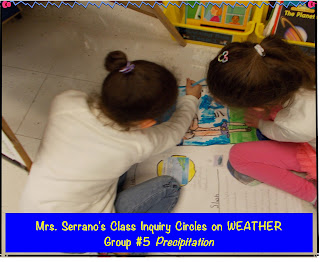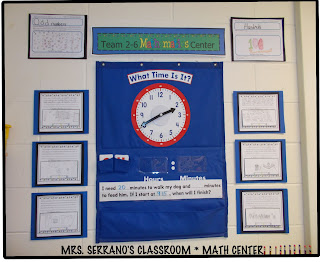Another great week…time is flying! I have so much to cover with my students and so little time to get it all done. I am moving on to time after the spring break. I found some really great activities and sites to do/use for meeting the needs of the many levels that I have in my classroom, as far as math goes. The links are below.
I am thinking that I will need to spend a couple of extra weeks with NF reading. Kids are struggling with pulling out the "Big Ideas" and supporting it with text evidence. I think they just need practice…constant practice.
We worked a little bit with poetry writing this week. Shared some reading of Jack Prelutsky's work. They love his work…such kid friendly and enticing topics for all. I also let the kids dive into Dr. Suess for a workshop. They were able to use the mentor to write a parallel piece. They came up with some pretty interesting things.
For a writing sample for this week I asked the kids to think about what they would do if it were a "Cold rainy day" and write a poem using The Cat in the Hat as a mentor. I will use this for a BB display.
Friday, March 22, 2013
Friday, March 15, 2013
Anchor Charts NF Book Club Unit of Study
Labels:
Nonfiction,
Reading Wordshop
Thursday, March 14, 2013
Nonfiction Word Hunt
At the start of each new science unit, I have my students hunt for the "key" words that they find on the new topic in a variety of texts. They browse the text features across all of the print material. As they browse the text, they record the words they find and tally up how many times they see them across the materials they worked with in the session. They really enjoy doing this and
learn so much about content vocabulary and how important it is to pay close attention to it.
Friday, March 8, 2013
What A Week!
What a week it has been! Had my first "pop in" observation. Seemed to go well...I was teaching math...counting money. Positive feedback at post observation conference. I won't get the formal write up for a few weeks. I am just happy that at least one is complete.
Started my nonfiction reading clubs unit of study at the start of this week. I really enjoy teaching this unit. First, because it is always a big hit with students. Second, because there are so many great resources to draw from. Finally, for me, this unit seems to target so many great strategies for reading and writing.
This year I have so many boys interested in sharks and whales. I knew all of those ocean creature books I purchased a few years ago would come in handy. Girls this year are interested in plant and animal life cycles.
 I started with a review of nonfiction text features. Had my students do a "text feature hunt" for the first two reading workshops. They took the features from a variety of resources that I made available to them. Magazines, books, websites, and brochures. They had a great time with this. Some of my kids (about 7) still can only ID photos, titles, bold print and labels. I did some small group work with them with teaching points that focused on other text features and the benefits and usefulness for the reader.
I started with a review of nonfiction text features. Had my students do a "text feature hunt" for the first two reading workshops. They took the features from a variety of resources that I made available to them. Magazines, books, websites, and brochures. They had a great time with this. Some of my kids (about 7) still can only ID photos, titles, bold print and labels. I did some small group work with them with teaching points that focused on other text features and the benefits and usefulness for the reader.
 My whole group teaching points will begin to help students in identifying main ideas and using text evidence to support their thinking. We will be using the "boxes and bullets" idea that I learned a few years ago at a summer institute at the Reading and Writing Project at Columbia.
My whole group teaching points will begin to help students in identifying main ideas and using text evidence to support their thinking. We will be using the "boxes and bullets" idea that I learned a few years ago at a summer institute at the Reading and Writing Project at Columbia.
We started with a RAN (originally presented by Tony Stead). He is such a great workshop leader. If you ever get the opportunity to attend one of his sessions...it is a must. This is a copy of the RAN chart that I put together. The students place it in their Interactive SS/Science notebooks. They were introduced to the organizer earlier in the year and have used it with a great degree of success, not only as a reading tool but a writing tool as well.
TGIF!
Peace,
Started my nonfiction reading clubs unit of study at the start of this week. I really enjoy teaching this unit. First, because it is always a big hit with students. Second, because there are so many great resources to draw from. Finally, for me, this unit seems to target so many great strategies for reading and writing.
This year I have so many boys interested in sharks and whales. I knew all of those ocean creature books I purchased a few years ago would come in handy. Girls this year are interested in plant and animal life cycles.
 I started with a review of nonfiction text features. Had my students do a "text feature hunt" for the first two reading workshops. They took the features from a variety of resources that I made available to them. Magazines, books, websites, and brochures. They had a great time with this. Some of my kids (about 7) still can only ID photos, titles, bold print and labels. I did some small group work with them with teaching points that focused on other text features and the benefits and usefulness for the reader.
I started with a review of nonfiction text features. Had my students do a "text feature hunt" for the first two reading workshops. They took the features from a variety of resources that I made available to them. Magazines, books, websites, and brochures. They had a great time with this. Some of my kids (about 7) still can only ID photos, titles, bold print and labels. I did some small group work with them with teaching points that focused on other text features and the benefits and usefulness for the reader.  My whole group teaching points will begin to help students in identifying main ideas and using text evidence to support their thinking. We will be using the "boxes and bullets" idea that I learned a few years ago at a summer institute at the Reading and Writing Project at Columbia.
My whole group teaching points will begin to help students in identifying main ideas and using text evidence to support their thinking. We will be using the "boxes and bullets" idea that I learned a few years ago at a summer institute at the Reading and Writing Project at Columbia. We started with a RAN (originally presented by Tony Stead). He is such a great workshop leader. If you ever get the opportunity to attend one of his sessions...it is a must. This is a copy of the RAN chart that I put together. The students place it in their Interactive SS/Science notebooks. They were introduced to the organizer earlier in the year and have used it with a great degree of success, not only as a reading tool but a writing tool as well.
TGIF!
Peace,
Labels:
nonfiction reading strategies
Thursday, March 7, 2013
Wednesday, March 6, 2013
Did a really great activity today during the math block in my classroom.
Inquiry Circles
Labels:
Inquiry
Location:
United States
Friday, March 1, 2013
Subscribe to:
Comments (Atom)














